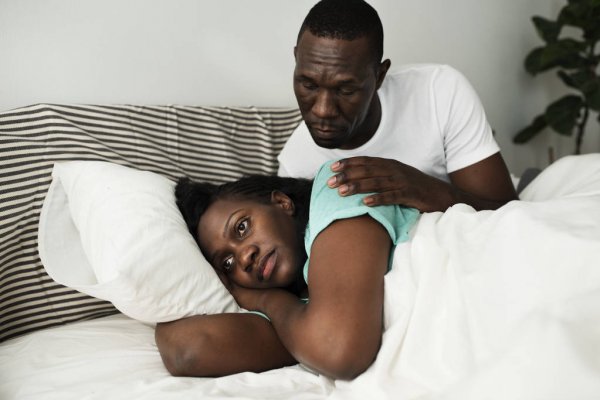Not all infertility journeys are exactly the same. Each journey is personal and based on the family building options that are specifically tailored to match individual situations. Exploring options such as donor sperm, donor egg, and donor embryo may not be on the options list at the beginning but the reality of building your family is best approached with an open mind.
On this column, the importance of Invitro Fertilization (IVF) has always been stressed, but before IVF was developed, there were no options other than egg donation available for women with complications such as premature ovarian failure, diminished ovarian reserve or genetically transmissible diseases.
What is egg donation? Who needs it, why and how successful is it? It is quite natural to ask these questions as much as it is necessary to emphasize the indications, screening and evaluation, procedures, statistics and known risks. Are you a good candidate for donor egg? You can easily find out.
First of all, have it at the back of your mind that the primary indication for egg donation was originally for women with premature ovarian failure, which is defined as menopause occurring before the age of 40 years. This condition indicates depletion of a woman’s own eggs and cessation of ovarian function. Causes are varied, and a thorough medical evaluation to seek an underlying or associated process is important prior to treatment.
In recent years, the predominant indication for egg donation has been for women with diminished ovarian reserve but with intact ovarian function. Women over 40 years old have reduced fertility in general, and a poorer chance for success after IVF. This gradual, age-related decline in fertility is a direct result of aging of the eggs.
The fertility evaluation may also uncover evidence of diminished ovarian reserve even in women younger than 40 years, as reflected by elevated FSH (follicle-stimulating hormone) and/or estradiol levels early in the menstrual cycle, determined by a blood sample taken on cycle day 2 or 3.
Other potential candidates for egg donation are women who have previously failed multiple IVF attempts, particularly when poor egg quality is suspected, and women carrying transmissible genetic abnormalities which could affect their children.
If you are a woman that is considering utilizing egg donation, first you would require a medical evaluation including a complete history and physical examination, to assure that you are in good health for pregnancy. It is important to seek and correct any abnormalities, which could otherwise compromise the success of IVF with donor eggs (i.e., factors which could affect fertilization, implantation or pregnancy.
A thorough evaluation or screening of each potential egg donor is of critical importance, whether the donor is known to you (e.g., a sister) or is anonymous. This screening serves to protect all parties involved (the donor, the recipient and the resulting offspring). We often insist that the donor should generally be younger than 35 years old, with laboratory evidence of normal ovarian reserve and no indication of impaired fertility. She must undergo testing for communicable infectious diseases and genetic screening both via a detailed family history and specific blood tests.
Testing of the egg donor requires thorough evaluation or screening of each potential egg donor is of critical importance, whether the donor is known to the recipient (e.g., a sister) or is anonymous. This screening should serve to protect all parties involved (the donor, the recipient and the resulting offspring).
As the recipient does not undergo ovarian stimulation or egg retrieval, she is not exposed to the potential risks. The principal risk is multiple pregnancy, because egg donors are young (usually less than 35 years) and pregnancy rates are high because of this. The age of the recipient, even if over 40, does not affect pregnancy rates. It is important that the number of embryos transferred be limited, generally to no more than two or three embryos for a day 2-3 transfer or one or two embryos if transferred on day 5, at the blastocyst stage.
The argument for donor sperm (donor insemination or with IVF) is similar, particularly when the husband/partner has no sperm or has a very poor semen analysis (azoospermia, oligospermia, poor motility), or when there is a genetic problem which could be inherited from the male. It is usually recommended that couples or individuals considering donor sperm should see a counselor who is skilled at clarifying feelings about infertility. You and your spouse must feel comfortable with the decision. Couples or individuals usually have the right to decide which sperm bank and which donor to use. Most of the time, only frozen semen is utilized. The donor is well screened before the frozen specimen is used.
All donors should have tests for certain infections such as HIV, syphilis, hepatitis B, gonorrhea, chlamydia, etc. The donor’s semen should also be checked for the presence of white blood cells which can indicate an infection within the reproductive tract. The donor insemination procedure involves inseminating the woman as close to the time of ovulation as possible. Many women monitor their ovulatory cycles by testing their urine to know when ovulation will likely take place.
Cervical insemination is a simple procedure. A soft catheter is passed through the speculum to the cervical opening and the semen is released from the catheter. The woman may be instructed to stay lying down for 15-20 minutes and then a small plastic covered sponge with a string attached may be inserted to keep the semen as close to the cervix as possible. The woman is instructed to remove the sponge in 2-3 hours. With cervical insemination, the nurse can take a cervical swab several hours after the insemination which will reveal how well the sperm are surviving in the cervical mucus.Intrauterine insemination is often used to increase success rates with frozen sperm. After the sperm is processed, it is injected, using a syringe and thin catheter, into the uterus via the cervix. The insemination is usually painless.
The highest success rates are reported in women who have no infertility problems, are under 35 years old and whose partner/husbands have azoospermia (no sperm). Lower success rates are reported where there is a female factor (ovulation problem, endometriosis, etc.) Or the woman is over 35. Success rates vary from 15-20% but achieving pregnancy may take many cycles. If no pregnancy occurs after several cycles, IVF may need to be considered. Ovulatory stimulating drugs such as clomiphene or injectable gonadotropins can be given to the woman. Closely tracked ovulation monitoring as well as IUI can help increase the likelihood of success for some women.
Couples struggling to build a family can consider embryo donation as a viable option. If you’re trying to have a family and it isn’t happening the way you planned, embryo donation might be a good option. When as a couple or individual undergoes IVF treatment for infertility, there is possibility to cryopreserve any embryos not transferred during that cycle for use in a subsequent cycle.
And while the majority of the frozen embryos are intended for your own use in IVF treatment cycles, they are also potentially available for embryo donation to other infertile couples.





